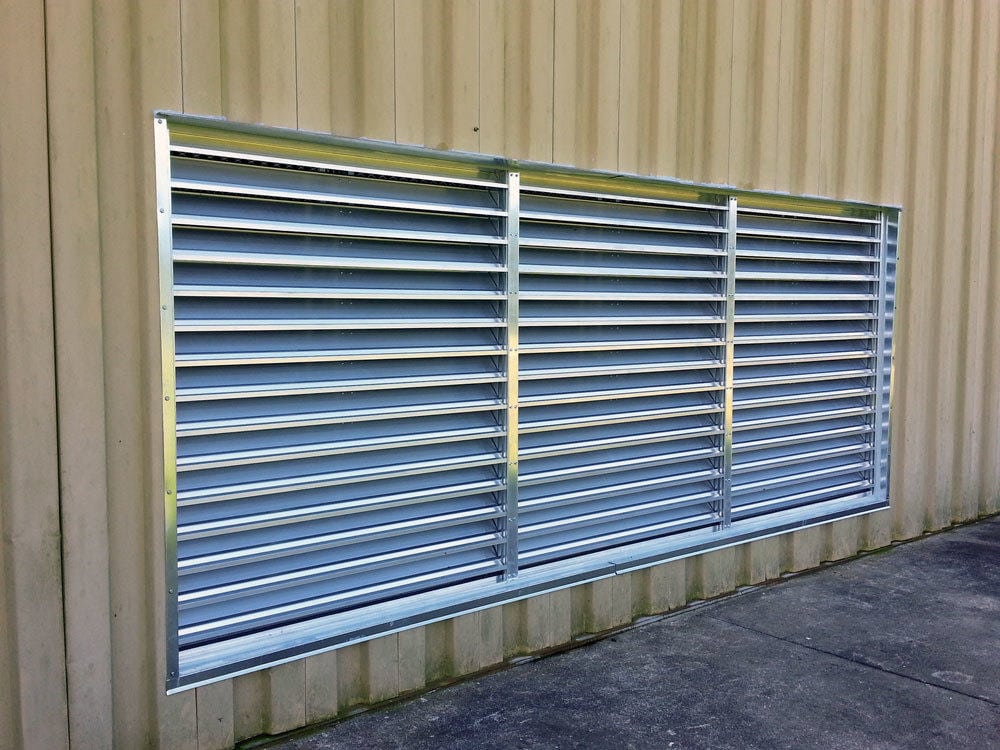Supply Air is Often the Solution
Most often people think the solution to solving a building’s heat problem is to add more roof exhaust fans. The logic being that to draw more heat out of the building, the building needs more fans. To really solve a ventilation problem though, it is a bit more complex. When it is hot inside the building, the issue isn’t about removing heat from the building but also about bringing in cool air from outside. The part of the ventilation equation that is often missed is supply air.
Intake Air with Supply Fans & Wall Louvers
Adequate supply air is often over-looked in industrial ventilation applications. In a high percentage of preexisting facilities, improving this is the best solution. Supply air enters the building through a wall louver at ground level. This is the opposite of the exhaust point that helps move air out of the building.
This means that warm air is not just leaving the building, but it is being pushed out by cooler, fresh air that is entering the building. The incoming air helps the stifling air flow out of the building more consistently and at a faster rate. Improving supplied air is often the best solution in retrofit situations.
The Effectiveness of Intake Air
Intake air is more effective at cooling workers and staff inside the building than a wall exhaust fan. Since exhaust fans blow out, there is no breeze. Workers don’t get the evaporative cooling effect like they do with intake air. In fact, since fans only have a reach equal to the diameter of its fan blade, the fan is barely felt on the floor at all.
By changing those fans to supply fans, and putting them at ground level, this creates a cooling effect right by the workers where it can make the most difference. These fans have a larger impact when they’re in the side walls at ground level. Furthermore, these are often the same models as those used for roof exhaust.
Having wall fans close to ground level means they are significantly easier to install and maintain as well. It is easier to climb to the top of a ladder than it is to go up to the rooftop.
Also, because these fans bring in cool, clean air, the system requires less cleaning and maintenance. Hot dirty air can really take its toll on mechanisms leading to rust and other issues. Wall fans do not experience the same wear and tear because they don’t have to move the polluted air. This means they require maintenance less often, saving time and money.
Supply Air Wall Louvers
No matter how many roof vent fans you add to a building, if you don’t introduce supply air then there will be no ventilation improvement. Moffitt reminds you to add supply air when improving your building. Learn more about improving supply air, and a building’s complete ventilation system today. Contact us now to get a free ventilation solution and design for your building.

